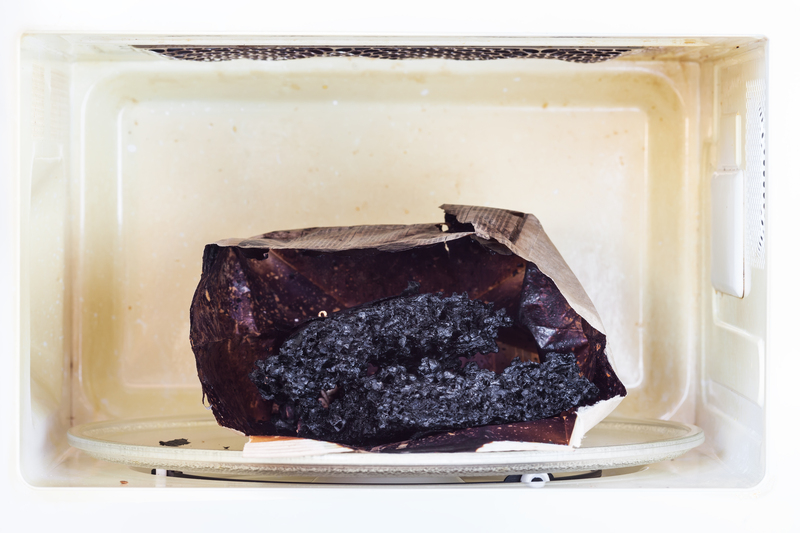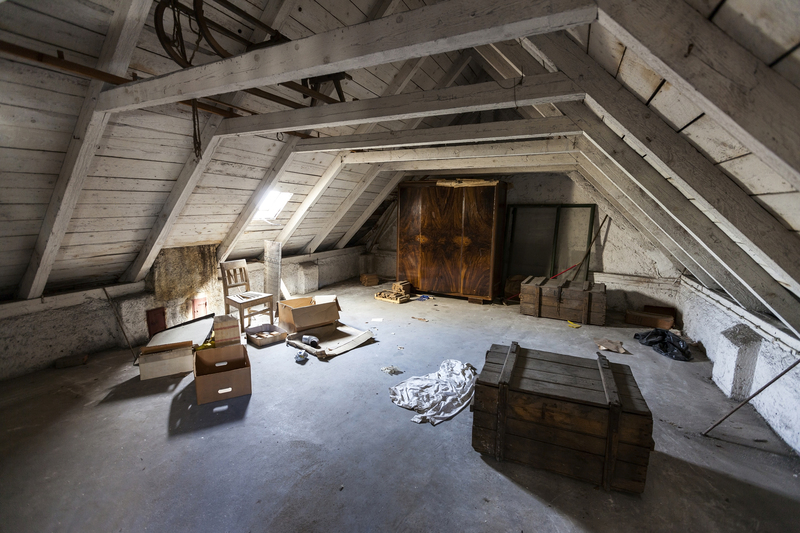Insider Tips for Streak-Free Windows You Need
Crystal-clear, streak-free windows are not just the mark of a well-maintained home or office--they provide aesthetic curb appeal, allow more natural light, and can even improve your mood. However, achieving sparkling clean, streakless windows isn't as simple as it might seem. Many homeowners and business operators struggle with smudges, residue, and lint, even after a fresh cleaning session. Whether you're preparing for a seasonal deep-clean or just maintaining your living space, understanding the right techniques and tips for streak-free window cleaning will make all the difference.
Why Do Windows Get Streaky?
Windows tend to collect dirt, dust, pollen, and water spots over time. But streaks often occur as a direct result of our cleaning techniques, not just the environment. Some of the main causes of streaks include:
- Using the wrong type or too much cleaning solution
- Cleaning in direct sunlight
- Using dirty or lint-shedding cloths
- Leaving behind soap or detergent residue
- Improper drying methods

The Best Tools for Streak-Free Window Cleaning
Just like a chef relies on quality knives, a squeaky-clean, streakless finish relies on the right cleaning tools. Here's what the pros recommend:
- Squeegee: A staple for professional window washers, squeegees help remove excess water and solution for a spotless finish.
- Microfiber Cloths: These are lint-free and ultra-absorbent, perfect for cleaning and buffing glass to a shine.
- Soft Sponge or Scrubber: Ideal for removing grime without scratching glass.
- Bucket: For mixing and dipping your cleaning solution.
- Spray Bottle: For misting your cleaning fluid directly onto window surfaces.
- Cotton Swabs or Toothbrush: Great for detailing corners and tracks.
Choosing the Right Window Cleaning Solutions
One of the most common causes of streaks is using an improper cleaning product. Commercial glass cleaners can work well, but so can DIY formulas. Here are some insider favorites:
- Vinegar and Water: Mix equal parts distilled white vinegar and water in a spray bottle. This natural cleaner cuts through grease and grime and leaves glass shiny.
- Dish Soap Solution: Add a few drops of mild dish soap to warm water. This is excellent for windows with stubborn dirt buildup.
- Alcohol-based Cleaners: Isopropyl alcohol, diluted with water, evaporates quickly and minimizes streaking. (Test on a small area first.)
Step-by-Step How to Get Streak-Free Windows
1. Pick the Right Time of Day
Sunlight dries cleaning solutions quickly, which can leave streaks behind. Clean your windows on a cloudy, cool day or when the sun isn't directly on the window for best results.
2. Remove Dust and Cobwebs First
Before applying any liquid,
3. Wash Windows from Top to Bottom
Always start at the top of the window and work your way down. This prevents drips from spoiling your cleaned lower panes.
4. Apply Your Cleaning Solution Evenly
Spray or apply your chosen window cleaner evenly across the glass. Avoid soaking the window--the goal is a damp surface, not a wet one.
5. Use the Squeegee with Skill
Hold your squeegee at a 45-degree angle. Starting at the top corner, pull it smoothly across the glass in a straight line. Wipe the blade with a lint-free cloth after each pass to avoid transferring dirt or excess solution back onto the window.
- Pro Tip: Overlap each pass slightly to ensure you leave no streaks between strokes.
6. Detail the Edges and Corners
Use a clean, dry microfiber cloth or a cotton swab to wipe any remaining drops or streaks from the edges and corners of the window.
7. Buff for an Extra Sparkle
For a final streakless window glass finish, gently buff the window with a fresh, dry microfiber cloth. This will pick up any fine residue and create a dazzling shine.
Common Window Cleaning Mistakes to Avoid
- Cleaning on a Hot, Sunny Day: Causes the solution to dry too fast, creating streaks and spots.
- Using Dirty Cloths or Equipment: Spreads old dirt and leaves lint or residue behind.
- Applying Too Much Cleaner: Can flood the glass, making it hard to fully remove, which leaves streaks.
- Overlooking the Window Frames and Sills: Dust and dirt from frames can transfer onto clean glass.
Professional Window Cleaning Techniques
Professionals have a few extra tricks up their sleeves for impeccable streak-free window glass:
- T-Handles and Window Washing Poles: Useful for large or high windows, allowing even pressure and coverage.
- Specific Motion: Experienced window cleaners often use an "S" motion with their squeegee--which minimizes lines and ensures complete coverage.
- Two-Stage Drying: One towel for wiping the squeegee blade, another for buffing the edges.
DIY vs. Store-Bought Window Cleaners
So, is it better to use a DIY window cleaner or a commercial cleaner? Both have advantages:
- DIY Cleaners: Vinegar and water or diluted dish soap are inexpensive, non-toxic, and effective for everyday cleaning.
- Commercial Cleaners: Great for deeply soiled windows, sometimes include anti-fog or anti-static ingredients for longer-lasting clarity.
The key is to avoid heavy fragrances and dyes, which can leave residue and may attract more dust post-cleaning.
How Often Should You Clean Your Windows?
For maximum clarity and a streakless window finish, it's smart to clean residential windows every three to six months. Businesses on high-traffic streets or in urban environments should consider monthly cleaning for the best appearance.
Special Tips for Hard Water Stains and Mineral Deposits
If your windows develop cloudy spots or etched marks (common near sprinklers or after rain), you're dealing with mineral deposits from hard water. Here's how to banish those tough stains:
- Use Undiluted Vinegar: Spray directly on the affected areas, let sit for 5-10 minutes, then scrub gently with a non-abrasive sponge.
- Baking Soda Paste: Make a paste with baking soda and water. Apply to the stain, gently rub, and rinse thoroughly.
- Commercial Limescale Removers: Use as directed, but always test a small area first.
Streak-Free Windows: Seasonal Considerations
Different seasons can impact your window cleaning needs. Here's how to adjust:
- Spring: Remove pollen, dust, and post-winter grime.
- Summer: Avoid midday sun--opt for early mornings or late afternoons to prevent streaks.
- Autumn: Clean gutters and sills along with windows to remove fallen leaves and debris.
- Winter: Use lukewarm water and avoid harsh chemicals, as cold temperatures can make glass brittle and cleaning more challenging.
Green and Eco-Friendly Tips for Streak-Free Windows
If sustainability is important to you, eco-friendly cleaning methods can deliver excellent streak-free results:
- Use reusable, washable microfiber cloths instead of disposable towels
- Choose plant-based dish soaps or non-toxic vinegar solutions
- Use water efficiently--avoid leaving the tap running
- Avoid harsh chemicals that can harm plants or pets around windowsills
Addressing Condensation and Foggy Windows
A streak-clean surface isn't much comfort if your window is clouded by condensation inside the glass. This is commonly seen in double-pane windows with failing seals. Solutions include:
- Dehumidifying your home or room
- Ensuring proper window sealing
- Professional repair for trapped moisture between panes
Streak-Free Windows in Hard-to-Reach Places
High or awkwardly placed windows don't have to stay dirty! Here's how to safely keep upper-level windows streakless:
- Invest in telescoping window cleaning poles with microfiber or squeegee attachments
- Use a sturdy ladder with appropriate stabilizing features
- Consider professional window cleaning for multi-story windows to ensure safety and a perfect finish
Final Pro Tips for Streakless Window Glass
- Change Your Water Frequently: Dirty water can leave a film and cause streaking.
- Buff with a Glass-Specific Cloth: Some brands offer glass buffing pads that enhance shine without effort.
- Don't Forget the Screens: Remove and clean window screens separately for total clarity.
- Inspect in Different Light: Sometimes streaks appear only when sunlight hits the glass at a certain angle. Always check your work from different angles and buff if needed.

Frequently Asked Questions (FAQ) About Streak-Free Window Cleaning
How can I avoid streaks when cleaning my windows?
Use a squeegee, work out of direct sunlight, use lint-free microfiber cloths, and avoid over-applying cleaning solution. Always finish with a dry buff.
What's the best homemade window cleaner recipe?
A mixture of equal parts white vinegar and water is safe, effective, and helps prevent streaks. Add a drop of dish soap if the glass is especially greasy.
Can I use newspaper to clean windows?
While old-school, modern newspapers may leave ink or residue. Microfiber cloths are a safer, streakless alternative.
Why do my windows always dry with streaks?
Common causes include cleaning in sunlight, using dirty cloths, or leaving too much cleaning solution on the glass. Switch to a squeegee and use fresh cloths to improve your results.
Are there windows that shouldn't be cleaned with vinegar?
Avoid vinegar on tinted, filmed, or specialty-coated glass, as acids may damage these surfaces. Always follow manufacturer care instructions.
Conclusion: Enjoy Crystal-Clear, Streak-Free Windows Year-Round
With the right tools, techniques, and timing, streak-free windows are entirely within reach. Whether using a professional squeegee or mixing up a homemade cleaner, the secret is in the details: keep your cloths clean, your movements smooth, and never clean windows in direct sunlight. Remember these insider tips for streak-free windows the next time you tackle your glass, and you'll enjoy unobstructed views, brighter rooms, and that fresh, sparkling look.
Want brilliant results? Bookmark this ultimate guide for streak-free window cleaning and share it with others who take pride in their view!

